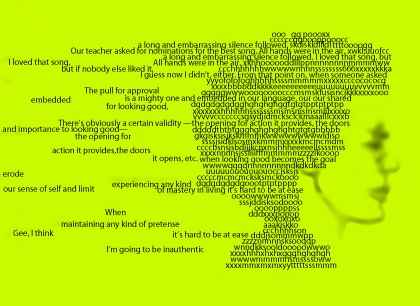2011 A Year of Yes
Top Posts:
- David CunninghamVenturing beyond existing realities
- Manal MauriceThe unique creative power of love
- Gopal RaoAn excursion into possibility
- Gitanjali KoppikarBusiness not as usual
book and genius
fb
Insights & Distinctions Buy Now
El Foro Landmark
SHARE:
Self-hood is the self taking a stand on its self
By Joe DiMaggio, MD
“…Our teacher asked for nominations for the best song. All hands were in the air. When I announced my choice, a long and embarrassing silence followed. I loved that song, but if nobody else liked it, I guess now I didn’t, either. From that point on, when someone asked my thoughts, I’d have them respond first, and then express my opinion accordingly.”* The pull for approval, for looking good, is a mighty one and embedded in our language, our shared practices, in the fabric of our day-to-day lives. There’s obviously a certain validity and importance to looking good—the opening for action it provides, the doors it opens, etc. It’s when looking good becomes the goal (however unwittingly) that it can erode our sense of self and limit experiencing any kind of mastery in living.
When maintaining any kind of pretense, our identity gets wrapped up in our circumstances or the reasons we give—we lose our self-hood and it’s hard to be at ease. Yet it’s not as if we woke up one morning and intentionally said, “Gee, I think I’m going to be inauthentic today.” That way of being and acting is the already/always condition of being human. We didn’t invent it, we didn’t make it up, it’s “just there.” And it’s against that gravitational force that we attempt to be authentic.
Self-hood is about the self taking a stand on its self—it’s an existential act. Self-hood has no persistence—it doesn’t exist in time, it must be created at all times, and that requires courage. When we are being true to ourselves, the already/always condition becomes stripped of its power—mastery in the art of living becomes possible.
*Adapted from David Sedaris, Children Playing Before a Statue of Hercules
Joe DiMaggio
Landmark Forum leader
MORE JOE DIMAGGIO
You might also like…
-
Jerry BadenHappiness is an inside job
-
Laurel ScheafCreative acts—the edge of freedom
-
Joe DiMaggio, MD
-
Barry GriederWhen power and freedom emerge







